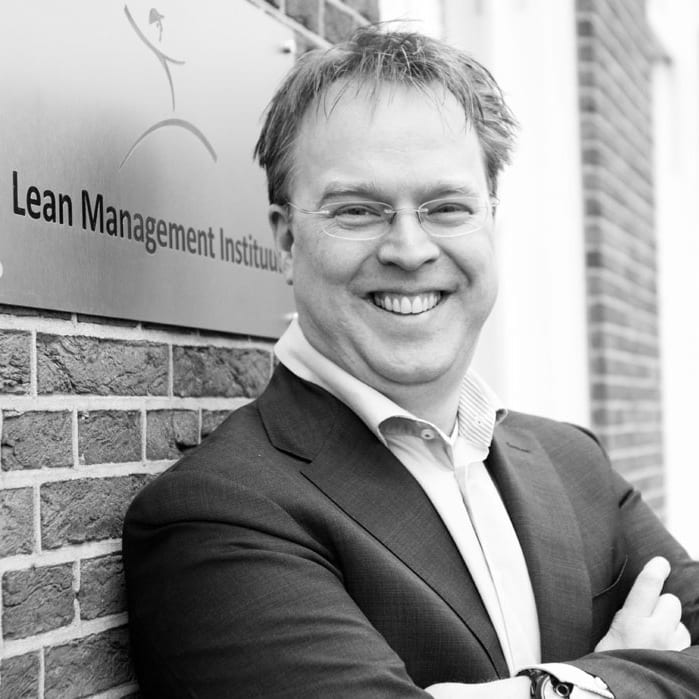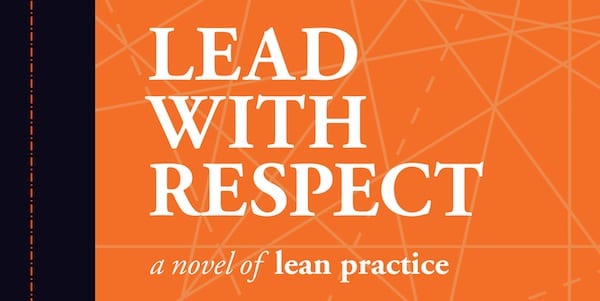
How to be multi-dimensional in your lean transformation
FEATURE – Because each lean transformation is unique, we can't expect an off-the-shelf solution to work. The author discusses multi-dimensional transformations and how we can be flexible but also structured.
Words: René Aernoudts, President, Lean Management Instituut
Talk to organizations out there and you will soon find that each and every one of their stories is different, and that lean success can stem from several approaches. Indeed, a recent piece of research by our Lean Global Network colleague Arnaldo Camuffo on the elements that determine good outcomes in our lean transformations has demonstrated that there is not one best solution a company can adopt.
Some organizations might make inroads into embracing lean because their CEO is highly engaged and charismatic, for example, while for others the success factor might be their ability to get people on board. What never changes, however, is the fact that until we stop relying on one-size-fits-all solutions that don’t take into account our companies’ uniqueness and needs we will continue to fail.
Because every company is different, approaches to transformations can also vary greatly – everything is situational, and one’s way of dealing with each situation must be reflected in the actions one takes.
This really got me thinking. We are often hired by companies telling us that their work with other consultants hasn’t borne fruit. “We were told to train 70 people and make them green belts… and then nothing happened.” “They asked us to follow the lean program they had designed for us, and at first people did it, reluctantly. After the consultants left, however, everything went back to its original state.” You get the gist.
So, why do managers keep following pre-packaged solutions even though they know they won’t work? By now, it should be clear to everybody that such approaches rarely yield the amazing results they promise. Indeed, organizations tend to be quite one-dimensional in their transformational efforts: they will, for example, focus on kaizen and process improvements, or expect to turn things around by simply sending people to training. No wonder they then struggle to get any results!
But how to do it? How can we deal with our unique circumstances while giving structure to our lean transformation? In my experience, there are a number of dimensions that we should keep in mind whenever we are trying to transform a business:
- Strategy and leadership;
- Value stream management;
- On-the-job training;
- Culture.
First, we must determine whether our strategy is sound and then help it reach everybody in the business (hoshin kanri). This approach, which is a far departure from traditional management, calls for leaders to engage first-hand in PDCA, gemba walks, and coaching. In other words, it calls for dramatic changes in leadership behaviors.
Hoshin also uses visual boards to boost management education: at Dutch construction company Dura Vermeer, for instance, the CEO was struggling to get the directors involved in lean change, until he started to get them in a group to work on, update and refine the boards. After a few months, the directors felt they had learned a lot, “almost as if they had been on a management course”.
Once our plan going forward is defined and steps are made to communicate it effectively to the whole business, we can focus on improving processes in the value stream – through kaizen (and sometimes kaikaku). Traditionally, organizations run a kaizen week, but often times the outcome of such approach is a lot of plans and no way of implementing them. Instead, we should strive to visualize and improve the process every single day, constantly monitoring each step (while retaining a big-picture view of the value stream), so that problems are quickly highlighted, communicated and corrected.
In business, nobody likes surprises. Say your company experiences a sudden spike in demand: if you have been tracking the work on a regular basis, you will have had the time to come up with proper countermeasures to the increase; if you haven’t, you might just be in trouble. I have been working with a housing cooperative in the Netherlands that was struggling to get a clear overview of the number of projects they had going on at the same time, and of their progress. They turned to visual management to get a better understanding of the work (and workload), and they were shocked by what they found out. With a lead-time for providing rental accommodation to citizens as long as 83 months, the coop should have avoided taking on anything extra; instead, they kept opening new projects, even though their capacity didn’t allow it. This is common in organizations that don’t monitor processes regularly and that don’t make improvement a part of their daily work. And mind you, this sort of behavior is not easy to sustain over time: at first, at Dura Vermeer, we managed to lower the failure cost by 80%, but because tracking and improving the process had not yet become a part of the daily routine, the results quickly proved elusive.
Indeed, running a kaizen week is not enough to solve problems once and for all. Until improvement remains a one-off activity, issues up and down the value stream will keep coming back.
But how do we make problem solving a part of the daily work? By changing our way of managing all the important factors in our operations (capacity, people, and customer demand, for instance) that can cause our company to succeed or fail in bringing change about. Critically, this entails training your people on the job, encouraging them to learn to use visual boards, identify problems, reflect on them, and finally solve them. It is the role of leadership to coach them until new, better behaviors become second nature. Essentially, their responsibility is to teach people to see variation and give them the tools to fight it. This, in turn, will create ownership in your employees. It’s perhaps the most important aspect of any lean transformation. This becomes even more critical if we consider how much management time we will be able to free up by empowering people and making them autonomous problem solvers: a manager who no longer has to fight fires every minute is a manager who will have time to think about ways to develop the business and innovate.
Finally, you need to develop the right culture. Even though people tend to see this as something exclusively linked to “soft skills”, the implication of creating a different culture are as practical as they can get. Doing so or not will greatly influence our ability to adapt to future changes in the market. Here’s an example: each week, the CEO of the housing cooperative I mentioned above (who, by the way, doesn’t even talk about lean, but about becoming a learning organization) gives his managers a new task to work on, a new problem to solve. It drives them mad, but what they have been able to achieve in the past nine months through this new approach has proved to them that the old way of managing is no longer an option. One of the managers walked up to me one day and told me: “It finally feels like we are doing what we are supposed to do, after years of just… ‘managing’!” This is what a dynamic culture of change looks like, but for it to exist management has to spend time with people, listen to their struggles, and explaining to them that it is ok to have problems.
In my experience, a successful lean transformation requires a customized approach based on the dimensions described in this article. Until our lean work focuses on individual off-the-shelf approaches that don’t address the unique problems a company faces, we won’t get very far with our transformational efforts.
THE AUTHOR

René Aernoudts is President of the Lean Management Instituut in the Netherlands, which he founded in February 2004. The institute has been spreading lean thinking in the Netherlands and beyond for the past decade. Before founding the LMI, René was a managing director at a consulting firm for nearly eight years, specializing in lean. After graduating at Erasmus University in Rotterdam he became a lecturer at two Business Schools. He then worked in Logistics at the Flower Auction before starting his consulting career. René has assisted dozens of companies in their lean journeys.
Read more


FEATURE – In this article, the author reflects on how his understanding of lean thinking evolved over time – as did the way he defined it.


INTERVIEW - The General Manager of a Delphi plant in Hungary talks about the lean transformation the site went through and the challenges automotive suppliers face in this day and age.


FEATURE – Construction is rife with waste, and yet lean is not widely adopted in the industry. The authors highlight how lean could benefit the sector, emphasizing the importance of developing problem-solving capabilities.


REVIEW - Michael and Freddy Ballé’s new novel, which came out this week, will help readers to understand what it really means to be a lean leader and respect people.

